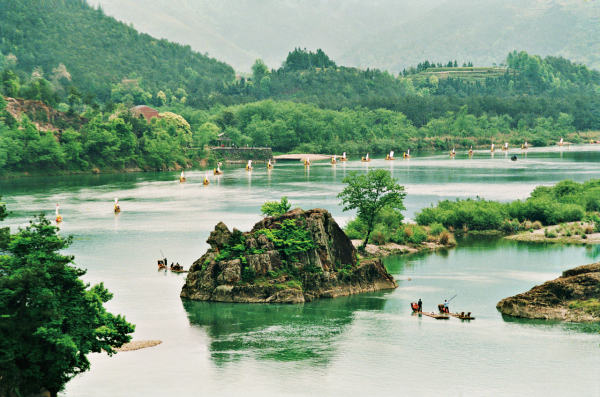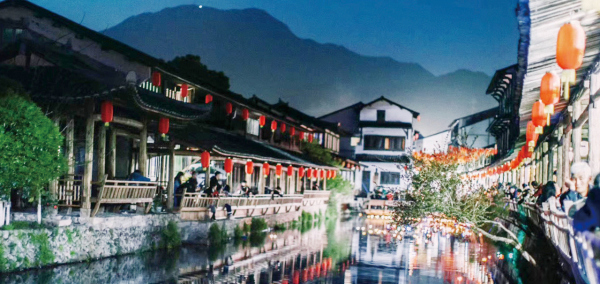The Nanxi River, winding across Yongjia county for almost 150 kilometers, stands like a three-dimensional landscape painting, with charming waters, strange boulders, multiple waterfalls, ancient villages, as well as luxuriant forests all in the picture. Throughout history, literary giants such as Xie Lingyun (385-433), Li Bai (701-762), Du Fu (712-770), Meng Haoran (689-740), Su Shi (1037-1101) and Ye Shi (1150-1223) have left their footprints along the Nanxi River, singing praises of its beauty in their poems and proses.
To attract more people and at the same time better preserve the area, which is part of the Yandangshan UNESCO Global Geopark, Yongjia county is implementing a raft of measures and programs. Rural tourism and projects on creative culture and on health and wellness are flourishing. A holistic experience for tourists that integrates local cuisine, comfortable accommodation, convenient transportation, in-depth travel, varied shopping and entertainment options is taking shape.
As an important part of the Oujiang River Landscape Poetry Road and as the “Cradle of China’s Landscape Poetry”, Yongjia has focused on cultivating its poetry resources. One program is to develop the county’s very own Xie Lingyun-themed landscape poetry culture belt. Over 20 places that have been mentioned in 25 of Xie’s poems have been renovated and more than 60 million yuan have been invested to build a theme park and a memorial hall, giving tourists an opportunity to immerse themselves in Yongjia’s rich poetry and history.
“I’m afraid the grasshopper boats at the Twin Streams, could not carry such a load of my sorrow.” (“To the tune of ‘Spring in Wuling’”) Thus wrote Li Qingzhao (1084-1155), the best-known female ci poet in Chinese history, in one of the most memorable lines in Chinese poetry. Another program is precisely to revive this traditional “grasshopper boat”, a local feature with a history of 1,500 years but was last seen more than 30 years ago. A 10-kilometer-long watercourse is specially set aside for travelers to ride the grasshopper boats and visit ancient villages and a host of scenic and cultural spots along the way.

On the other hand, all these are not taking place in a void; the key is shared participation and development. Ultimately, the goal is to not only benefit tourists, but also improve the livelihoods of local residents.
In the process, for example, old and unused ancestral halls have been changed into calligraphy halls, rural houses have been turned into bars, disused primary school premises have been built into art galleries…the list goes on. The efforts are paying off. A case in point is Richuan village in Hesheng township.
Jumping on the poetry road bandwagon, the village has transformed itself into a place for scholars, artists and students taking study trips on landscape poetry as well as landscape paintings. More than 20 art academies, schools and colleges, including China Academy of Art, have chosen Richuan village as their base. With 30,000-odd students coming to the village every year, businesses of family-run hotels and restaurants have boomed, and sales of agricultural products have picked up. The villagers are leading a life of comfort and poetic beauty.
The gains are more than economic; the arrival of these people and institutions has enriched the village culturally and educationally. “To some extent, they are the most important force behind the transformation of the rural areas,” Zhou Jianpeng, a Yongjia native and a postdoctoral fellow from Peking University’s School of Arts who has returned to work in Yongjia, concurs. At the heart of it all, he contends, is rural revitalization through culture and tourism in a sustainable manner. Now, international symposiums and exhibitions are being held in the village, adding another dimension to its overall development.
Long hailed as “the First River Under Heaven”, the Nanxi River is truly living up to its name by continuing nourishing people in a modern and sustainable way.

